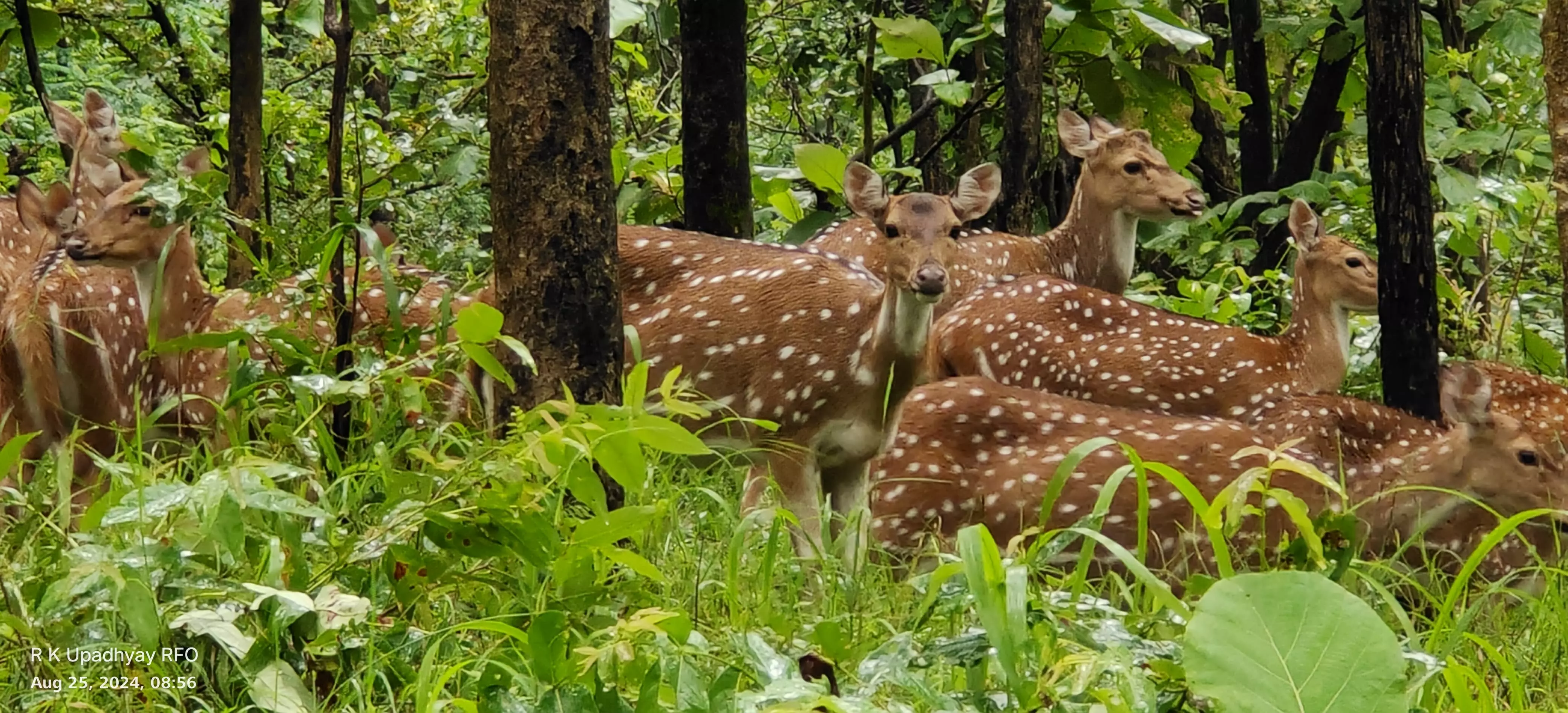Pench Tiger Reserve Faces Habitat Strain Due to Spotted Deer Overpopulation

BHOPAL: The ‘unique’ ecosystem of a wildlife sanctuary in Madhya Pradesh has led to a conflict between a particular animal species and its own habitat.
Pench Tiger Reserve (PTR) is now confronting a ‘unique’ situation in which the ‘overpopulated’ spotted deer is apprehended to put its own habitat, grassland, under stress.
Wood grass is a unique feature of PTR and hence, the tiger reserve spread over 400 sq km has a high density of chital or spotted deer, a forest officer of PTR told this newspaper on Wednesday.
Wood grass is the second most preferred habitat after grassland of the spotted deer.
The rich habitat has led the PTR to be overpopulated with spotted deer whose population has now swelled to over 40,000 in the wildlife sanctuary.
The key reason behind PTR being flooded with spotted deer is its rich habitat, availability of abundant water sources and lack of any human habitation in its core area, thus avoiding any kind of human-animal conflict.
The overpopulation of spotted deer in the PTR has created a unique issue for the wildlife sanctuary by triggering a conflict between the wild animal species and its habitat, wood grass and grassland.
Interestingly, PTR has also become a solution to the shortage of the prey base in other tiger reserves for being overpopulated with the herbivore.
“The overpopulation of spotted deer in the PTR has threatened to bring the grassland and wood grass in the reserve forest under stress, forcing the authorities to take proactive measure such as shifting of the animal to other tiger reserves to improve their prey base”, PTR deputy director Rajneesh Singh told this newspaper.
The PTR has shifted around 2,000 spotted deer each to Kuno National Park and SatpuraTiger Reserve in Madhya Pradesh over the past two years to improve the prey base of cheetahs and tigers in these two reserve forests respectively.
Shifting of the herbivore animals from the PTR to other tiger reserves in the state is in progress to help them overcome the shortage of prey base.
The PTR is dominated by fairly open canopy mixed forests with considerable shrub cover and open grassy patches.
The high habitat heterogeneity favours a high population of herbivores.
In fact, PTR has the highest density of herbivores (90.3 animals per sq km) and the second highest prey base biomass in India after Nagarhole (6013 kg per sq km).
The key predator in PTR is tiger, followed by leopard, wild dog and wolf.

